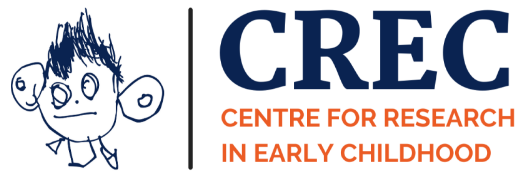Birth to 5 matters- feedback from crec’s consultation event
A couple of weeks ago, CREC Learning Circle hosted a consultation event which was an opportunity to hear about the Birth to Five Matters project initial survey results from the project lead, Nancy Stewart and contribute to the work of the Early Years Coalition by sharing views and ideas on the emerging findings and issues.
Birth to 5 Matters is being developed with the early years sector, drawing on the existing base of expertise - research evidence and practice knowledge.
Its purpose is to support implementation of the statutory EYFS, with an emphasis on providing practitioners with the guidance and further information they want to help them meet children’s needs in line with their ethos and pedagogy. It will be an updated, improved version of the original Development Matters valued guidance.
Priorities are likely to include children’s wellbeing and key skills and knowledge for every child growing up in the 21st century such as digital literacy, sustainability and citizenship.
Those joining the webinar organised by CREC were able to hear about findings from the initial survey and discuss emerging issues around dealing with the ages and stages of development without encouraging a tick list approach and defining EYFS curriculum. Synthesis of what the CREC community felt about the provocation is set out below.
- There was lots of appreciation around listening to practitioners and agreement that pooling expertise was wise practice;
- There was some concern in the chat around overall CPD in the sector;
- When discussing the age bands, there was lots of agreement around starting from the child and having the age bands factored ‘at the end’ and those participating via the chat agreed that representation as ‘circles’ provided ‘fluidity’ when considering child development; This was echoed in the post session feedback comments we received. Many practitioners valued the ages and stages and in particular stated how they were providing a helpful framework for less experienced staff. However, there was a clear agreement that the ages and stages needed to be displayed in such a way as to demonstrate that child development is not linear. One participant said ‘a trajectory or progression is valuable for supporting practitioners and parents in relation to what is broadly typical, although I do agree with the need for more granular detail for children with additional and complex need.’ - a comment which captured the common view;
- The middle and right hand columns of the previous Development were still valued and perhaps are the forgotten elements once the statements are reduced to tick lists or electronic platforms;
- A broader point made frequently in the chat function was that the high stakes accountability and school readiness agenda seems to have forced outcomes to lead practice and any guidance document needs to aware of this to minimize chances of it being used in an unintended way;
- There were interesting perspectives offered around SEND and parental participation in the new documentation which further supported the notion of ‘children first’ in terms of both curriculum and assessment;
·
· - On the notion of curriculum, those participating via the chat and guest speakers at the end all agreed that attributes and attitudes were hugely important. The feedback received after the event suggests that this is an area where practitioners are grappling with squaring a circle. One typical response which sums up responses of many: “Curriculum isn’t just limited to ‘the plan’ it is based on interactions that happen in response to events and interactions and learning opportunities that happen during the child’s time in the setting. There is a new learning opportunity in everything, it’s just how we look at things and looking at it with awe and wonder through a child's eyes.” There were other comments referring to curriculum being the process rather than (or sometimes, in addition to) the knowledge gained by the child.
Practitioners and those involved in professional preparation of practitioners have opportunities for active involvement in the process of shaping the new Birth to Five guidance through:
· - Specialist Working Groups
· - Online public survey and consultation on drafts
· - Early Years Coalition member organisation events
· - Reference group responses.
·
· More information about the Birth to 5 Matters non-statutory guidance project can be found here: www.birthto5matters.org.uk and or the project’s social media accounts, Facebook: https://www.facebook.com/birthto5matters and Twitter: @birth_matters.

